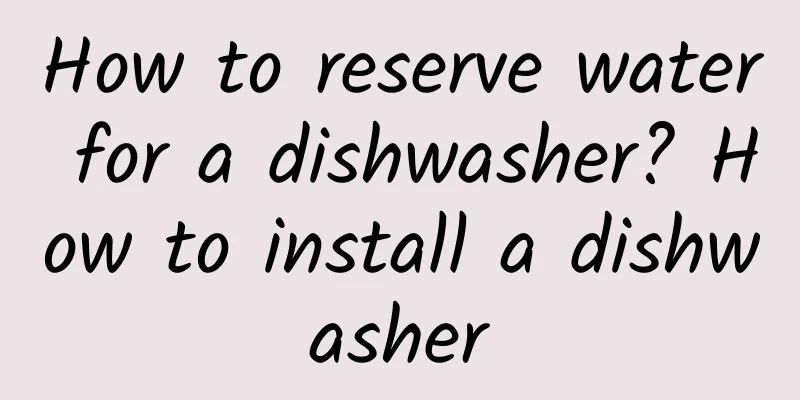Breastfeeding breast pain

|
After a woman gives birth, hormonal changes in her body cause her to produce a liquid called breast milk. Breast milk is mainly a kind of food provided to the baby. It is mainly produced from the inside of the female breasts. Therefore, many times when women are breastfeeding, they will feel something abnormal in their breasts. Some women even experience breast pain during their breastfeeding period. What is going on? It is considered that milk accumulation (milk stasis) often occurs in mothers with excessive milk and improper breastfeeding methods. Generally speaking, mothers tend to let their babies suck one breast first and then let them suck the other breast. Since most primiparas have a lot of breast milk and their babies are small, the baby is basically full after one breast is sucked empty, and sucking the other breast will not drain all the milk. There is a lot of milk left in the breast, and it cannot be sucked out in time. When breastfeeding for the second time, she did not switch to the breast that did not completely suck out the milk from the previous time. If this is repeated several times, the milk in the breast that has not been completely sucked out will accumulate more and more, resulting in milk accumulation in the breast that has not been completely sucked out. In addition, nipple hypoplasia, nipples that are too small, and inverted nipples will hinder the baby from sucking milk, resulting in the inability to completely empty the milk and causing milk accumulation. The initial symptoms of milk accretion are swelling and pain in the breast, and a hard lump and tenderness can be felt in the breast. The skin surface color may be normal or slightly reddish. Mothers often experience fever when they have milk accumulation. If the milk cannot be discharged in time during this period, it may develop into acute mastitis and finally turn into breast abscess. What to do if your breasts hurt while breastfeeding 1. Hot compress Before breastfeeding, breastfeeding mothers can take a comfortable position, apply a hot and wet towel to the breasts and areola for 3-5 minutes, and massage the breasts to stimulate the milk ejection reflex and squeeze out some milk. This will soften the areola and make it easier for the baby to suck. 2. Correct breastfeeding posture If the breasts are sore after feeding during lactation, the mother should adopt the correct breastfeeding posture, first breastfeed with the breast that hurts less, and pay attention to putting most of the nipple and areola into the baby's mouth. The baby's feeding position should also be changed regularly to reduce the stimulation of sucking on the mother's nipple. If you want to stop feeding your baby, the mother should gently press the baby's lower jaw with her index finger, and the baby will automatically spit out the nipple. Never pull out the nipple forcibly, as this will damage the nipple. 3. Apply milk If a breastfeeding mother experiences breast pain after feeding or if her nipples are chapped, she can squeeze out some milk and apply it to the nipples and areola after breastfeeding and wait for it to dry naturally. Never wash the nipples with soapy water, because there is a gland in the nipple or areola that secretes oil to protect the nipple and prevent cracking. Washing the nipples with soap will remove this natural protective film. 4. Wear a cotton bra If the mother's breasts are sore after breastfeeding, she should wear loose underwear and cotton bras, and put on nipple shields when necessary to facilitate air circulation and promote the healing of nipple cracks. If the nipple pain is severe and unbearable, breastfeeding can be suspended for 24 hours. During the time when feeding is not possible, the milk should be expressed and the baby can be fed with a bottle. 5. Seek medical attention promptly If the mother's breasts are stinging after breastfeeding or if the mother feels unbearable pain in the nipples, she should see a doctor in time to help the mother improve the baby's sucking posture. In most cases, the pain will disappear quickly. If the pain persists, pay attention to check the baby's oral condition. Sometimes the baby suffers from thrush, which will be transmitted to the nipples and cause nipple pain. This requires the doctor to treat the baby in time. |
>>: Shorter menstrual cycles after childbirth
Recommend
Does the lochia not stop? Do I need to have a uterine cleaning?
During the recovery period, mothers will experien...
Chinese Cereals and Oils Association "Love and save grain, start with me" popular science picture and text - Quinoa: It is not a grain, but its nutrition is better than most grains (Part 1)
Produced by: China Cereals and Oils Association S...
How long should I wear a postpartum belly band?
Cup pregnancy is something that every girl should...
What are the disadvantages of eating too much hot pot? Is it better not to drink red wine when eating seafood hot pot?
Eat a pear after a barbecue: Pears are a favorite...
How long does it usually take to detect pregnancy?
For every female friend who is pregnant for the f...
How to regulate women’s uterine cold?
Gonghan means that the female uterus is cold. Ute...
Daily tips for breast enhancement
Women are born to love beauty, so while being bea...
Morgan Stanley: 44% of iPad users will reduce office paper usage
According to a statistical study by Morgan Stanle...
Can women take a hot spring bath during menstruation?
Women can often soak in hot springs to beautify t...
How much pain is the period?
Gynecological diseases are diverse, and menstrual...
Can I get pregnant if I ejaculate inside her on the first day after my period ends?
It is generally not easy to get pregnant if you h...
What are the dangers of scoliosis in women?
How does scoliosis affect women? Is it dangerous?...
Married women dream of red apples
In reality, our first impression of apples is tha...
Don’t think of aging as a disease. If you are over 70, you are still healthy even if your physical examination indicators are slightly abnormal.
A 70-year-old elderly friend told Huazi worriedly...
Why are there two bars if you are not pregnant?
For many female friends, pregnancy is a very impo...









